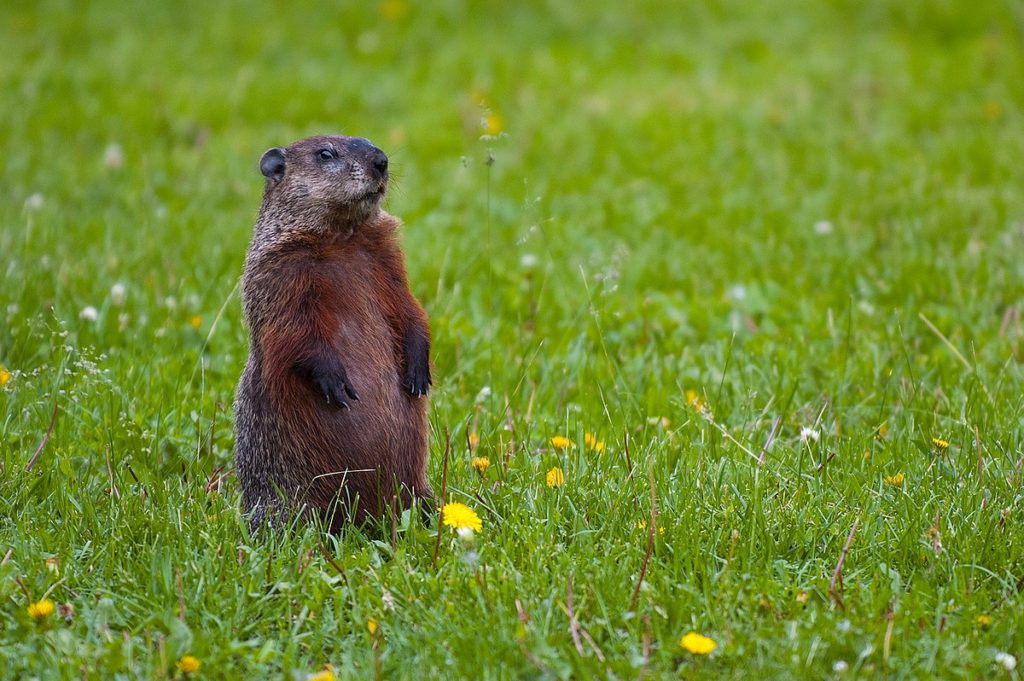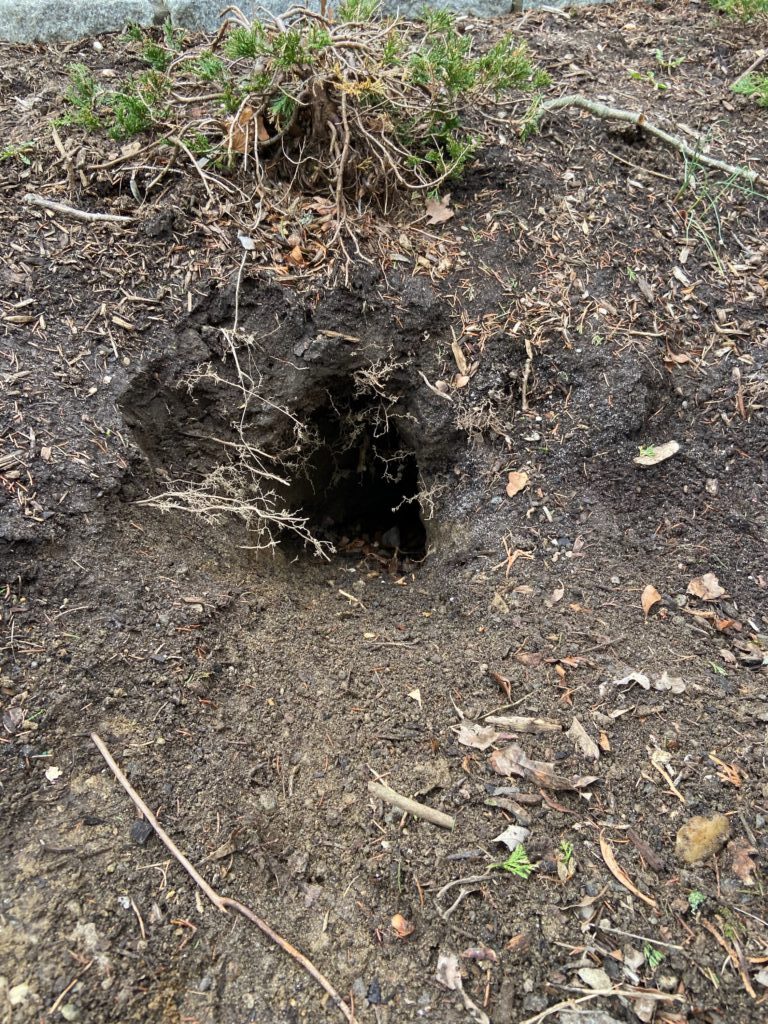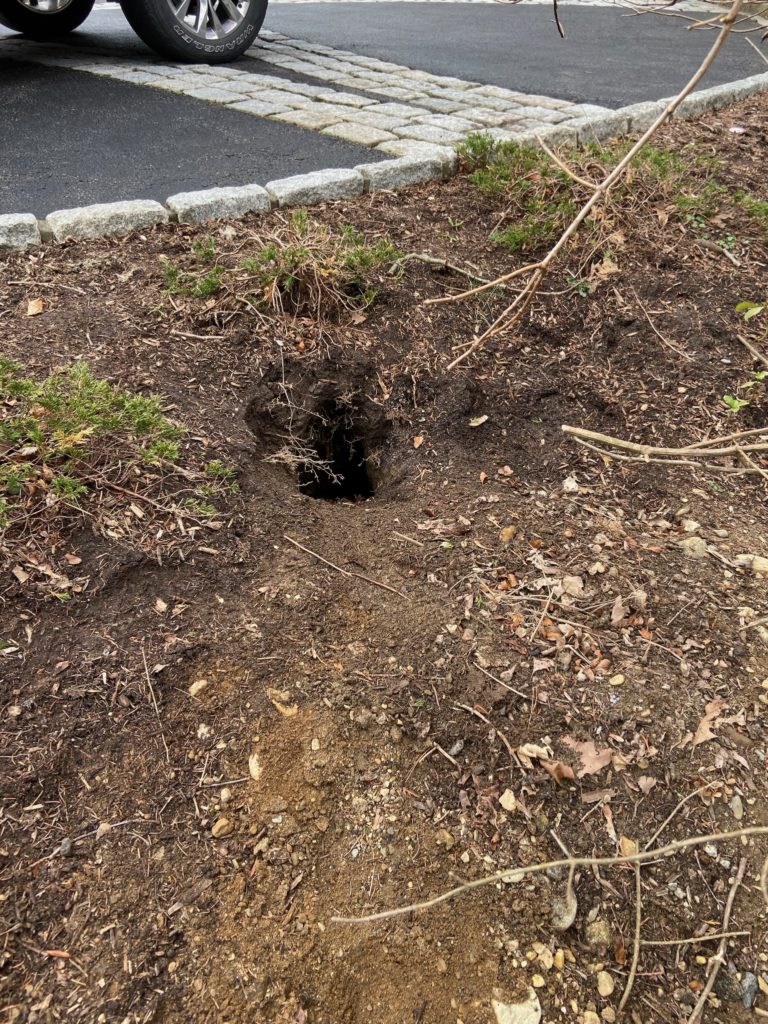Groundhog or Woodchuck?



Finally got a peak of who has been digging holes in your lawn? It seems the mid sized rodent is a “groundhog” according to your google search, but your husbands search landed him on “woodchuck.” They look identical. Well, which is it?!
Both are correct. This mid sized rodent is a part of the marmot family and has gone by several names such as “groundhog”, “woodchuck”, “whistle pig” and even “land beaver.”
They have gained popularity in North America as we have trusted them with the projection of a long winter or early spring, depending on if they are willing to come out of hibernation: “Groundhog Day.”
There are 15 species of Marmot according to their region of either North America, Europe or Asia. While I can’t say how many other nicknames they have acquired across the world, you would be safe to refer to them as any of the above listed names when calling Westchester Wildlife LLC.
Squirrel Damage is all too real!
Squirrels are desperate to get into your home this time of year…your home is probably pretty toasty, who can blame them?! However, when damage is done and squirrels are raiding your living room…we have a problem! Trust that Westchester Wildlife can humanely remove the squirrels and seal and repair the damage. Take a look at the before and after of one of our valued customers homes. With over 30 years of experience, we have seen a lot of holes like these!
Repairing the hole is the last step, we want to make sure the squirrels are out first! Trapping an animal inside the home can not only be inhumane but once the animal has deceased they can leave your home smelling..well…less like clean linen!
For more information on how and what we use for Squirrel trapping and removal, you can listen to owner Jim Dreisacker explain our methods, just visit this link: Squirrel Removal

Have Bees Invaded Your Home?
Brent Wallace, son of a homeowner in Spring, Texas, recently discovered the stuff of nightmares in his mother’s home. Fourteen years ago, Wallace noticed a hive of bees in the first story wall of the house and had it removed. Six months later, the bees returned.
That was in 1999. Walter Schumacher of Central Texas Bee Removal states that bee hives can grow at a rate of one-foot to one-and-a-half feet each year. As a result, Wallace’s house now has twenty feet of bee hive in the insulation. The two-story hive is the largest hive that beekeepers of the region have reported.
The beekeepers have removed the first ten feet of hive already and will be returning early next week to explore the rest of the damage on the second floor of the house.
They’re focus, along with Wallace’s, is to save the bees, as populations in central Texas are under attack of an illness called Colony Collapse Disorder. And there are certainly an overwhelming amount of bees to rescue. The estimate currently stands between 200,000 and 500,000, with only 50,000 having been removed thus far.
Honey bees are generally not dangerous, but in these numbers, under stress, a panic could be “pretty nasty,” says Schumacher. Central Texas Bee Removal is in its third year as a non-profit organization that runs under the premise of keeping bees out of harm’s way while also preventing humans being stung. After removal, the bees are relocated to a plot at Texas 59 and I-10.
Avoid Brent Wallace’s issue and take care of a hive before it gets out of control. Contact Westchester Wildlife today and let the professionals help.
Source: http://www.chron.com/neighborhood/springtx/article/At-2-stories-and-500-000-bees-hive-discovered-in-5364152.php#photo-6099777
17 Species of Snake in New York
There are 17 species of snake in New York. And they are all integral parts of their ecosystems. As prey for foxes and hawks and predators for rodents of all sorts, they are an irreplaceable link in New York food chains.
The two most common snakes are garter snakes and water snakes. Garter snakes are very adaptable; they can live comfortably around humans, in marshland, in fields, and in woodlands. Their characteristic feature is three yellow stripes down their backs and they don’t usually get to be more than two feet long. They are non-venomous.
Water snakes can grow up to 42 inches in length and are non-venomous. They are often mistaken for the venomous cottonmouth, which are not found in our state borders. They can be quite aggressive and are found near wetlands and bodies of water.
Milk snakes, which are often found in barns and are tan with reddish splotches, and black rat snakes, which are usually found near rocky cliffs and completely black, are less common and non-venomous. The black rat snake is the largest snake in the state by far, maxing out at a whopping eight feet.
We only have three venomous species of snake in New York and all three are fairly rare. The timber rattlesnake and massasauga both have rattles at the end of their tails. Both are considered “chunky” snakes, though the timber rattler can get up to six feet in length, while the massasauga can’t exceed three feet. Copperheads can be distinguished by their copper-red faces and distinct bands that run the full length of their bodies.
It is always a good idea to be aware of the snake types in your region. However, if you believe that you may have a snake problem in your residence, call Westchester Wildlife for a consultation.
Got Bats? Give us a call at 800-273-6673
Oh yes– it’s bat season! Those things you seeing flying around your house at dusk are not birds– they’re bats!
If you see a bat in your house, DO NOT TOUCH IT! If you can, trap it in one room and give us a call.

Bats can form colonies in your attic, in the eaves of your porch, or really, anywhere in your home. Don’t mess around with bats. They can carry rabies!
Coyotes in Suburban Areas
“When the population gets too high, you need to have a proper trapping program coming in and removing coyotes every year to lessen the chance of an incident,” said Dreisacker. “The coyote numbers aren’t going to go down, they’re just going to keep going up.”
Coyote Removal
NYS Department of Environmental Protection (NYDEC) began field work in 1949 to determine the best method for trapping Coyotes. There has been an increase of human/coyote conflict in the northeast. The suburban dwelling coyote tends to flock most commonly to areas where the deer population is high. Deer population is also on the rise. Since Sept. 2012, there has been 8 reported Coyote sightings in lower Westchester County.
Coyote behavior in suburban areas in relation to people, pets, and livestock:
According to NYDEC, only a handful of coyote attacks on humans are reported. Coyotes seem to have a diminished fear of humans, which could lead to a potentially dangerous situation. There is an unsettling nature regarding coyotes and pets. During March and April, coyotes become extremely territorial as they set up their dens for soon arriving pups. Homeowners yards become “coyote” territory. Sometimes, pets are caught in their path and preyed upon. Livestock problems associated with Coyotes in New York involve typically free-ranging chicken, sheep, or ducks. Conflicts can be deterred with proper breeding and raising of livestock.Cornell Study on Coyote Trapping: A Special Focus on Behavior and Ecology
“Dreisacker is currently involved in a prominent Cornell study on coyote trapping, where the research is centered in the Mount Pleasant area where Dreisacker was raised. On the first night, he said he caught two coyotes in collarum traps, showing the importance of utilizing such traps in suburban terrain.”Resources:www.nycoyote.orgIf you or someone you know is needs assistance with Coyotes
Please contact: 1-800-273-6673 to schedule your inspection today!
Serving New York in Westchester, Dutchess, Putnam, and Rockland Counties
Serving Connecticut in Fairfield County
Coyote Behavior and Characteristics
Coyotes living in New York State have the appearance similar to that of a German Shepard. Some physical traits include:
The Eastern Coyote:

Large erect ears
Gray, Tan or Reddish Yellow coloring
“Bib-like” patch of white fur around neck
Generally weigh between 35 to 50 pounds
Appear heavier due to a thick, double coat of fur
Coyotes are known to travel in large groups. “Packs” consist of six closely related adults, yearlings and young. Coyote packs are generally smaller than Wolf packs. However, the eastern coyote species in New York does not form a true ‘pack’ like their relative, the wolf. Instead, they organize as a ‘family unit’. Units are made up of an adult pair and their pups from the current year. Coyote units will defend a territory of 6 to 15 square miles against other coyotes. This behavior limits their numbers in any one area.
During the Fall and Winter months, coyotes tend to prey on smaller mammals. Winter becomes harder as the populations of small animals decline, so coyotes seek out their largest prey – whitetail deer. Deer are killed by motorist frequently this time of year and can become an important food source for coyotes.
It is common to hear the sounds of coyotes howl in the night, as they are known as nocturnal wildlife. It is easy to think through the echo of the woods that there must be an overflow of them out there, but in reality its only five of six. A small number of coyotes can make a lot of noise.
Our upcoming blog will explore Coyotes Behavior in Suburban Areas.
If you or someone you know needs assistance with
Please contact: 1-800-273-6673 to schedule your inspection today!
Serving New York in Westchester, Dutchess, Putnam, and Rockland Counties
Serving Connecticut in Fairfield County
Importance of Attic and Basement Clean Outs
Greetings Westchester Wildlife enthusiasts! The holidays are upon us again! It’s the perfect time of year to seal active animal entry points and clean out animal waste left behind in attics, basements, or crawl spaces before your company arrives.
Animal waste not only damages your home insulation, but can leave stains on the ceiling and side of the house. Odors left behind can be unpleasant and potentially hazardous. Several animals living in attics, crawl spaces, and basements carry harmful parasites and viruses harmful to humans. Bat droppings (guano) causes histoplasmosis, raccoon feces carry raccoon roundworm (known as Baylisascaris procyonis), and mice droppings carry the Hantavirus. Exposure to feces and urine is a biohazard and clean up is imperative.
Our services will provide you peace of mind and assurance that your living space is a happy and healthy one! Westchester Wildlife will thoroughly clean and remove contaminants with an industrial vacuum. The area is then cleaned and disinfected to kill any parasites or fungus associated with wildlife.
If you or someone you know is interested in our Attic and Basement Clean Out Services, please contact 800-273-6673 to schedule your inspection today!
Serving New York in Westchester, Dutchess, Putnam, and Rockland Counties
Serving Connecticut in Fairfield County
Northern Flying Squirrels in Your Home
FLYING SQUIRRELS IN YOUR HOME:
The Northern Flying squirrels will often find small openings in the corners of dormers on the home around the gutter line where drip edge may be missing. Also, in a rotted soffit area or just simply use an entrance created by a woodpecker or other animal. They will even chew their way into the attic sometimes if the wood is soft enough or water damaged. The insulation in the attic makes for perfect nesting area for the squirrels. They will also designate a toilet area where their droppings and urine can be found. These squirrels, although very cute and furry, can be a real nuisance and create several problems when they are living in the attic. One thing of major concern is that they tend to chew on things such as wires and foam covered pipes in the attic which can be a fire hazard. The other is that they use the insulation for a toilet area and nesting areas. We’ve seen the damage that can be done after years of droppings and urine accumulate and tunnels and holes are made in the insulation. This may lead to having all of the insulation in the attic replaced. Once the squirrels have taken up residence their scent will often attract other squirrels to move in.
To solve the problem a few steps must be taken. First it is important to find all the entry or possible entry points on the home. Next you’ll need a professional trapper to come and remove the animals. Once all the animals are caught all of the holes should be patched with some type of metal to insure other squirrels won’t try and move in. Once the house is sealed it is time to determine if your insulation should be replaced. If you do decide to have new insulation installed, you will find it useful in monitoring future animal activity.
If you or someone you know needs assistance with Squirrel Removal and you are in one of our service counties, Westchester, Putnam, Dutchess, Rockland, or Fairfield please contact Westchester Wildlife to schedule an inspection today!
914-760-5713 or 800-273-6673





